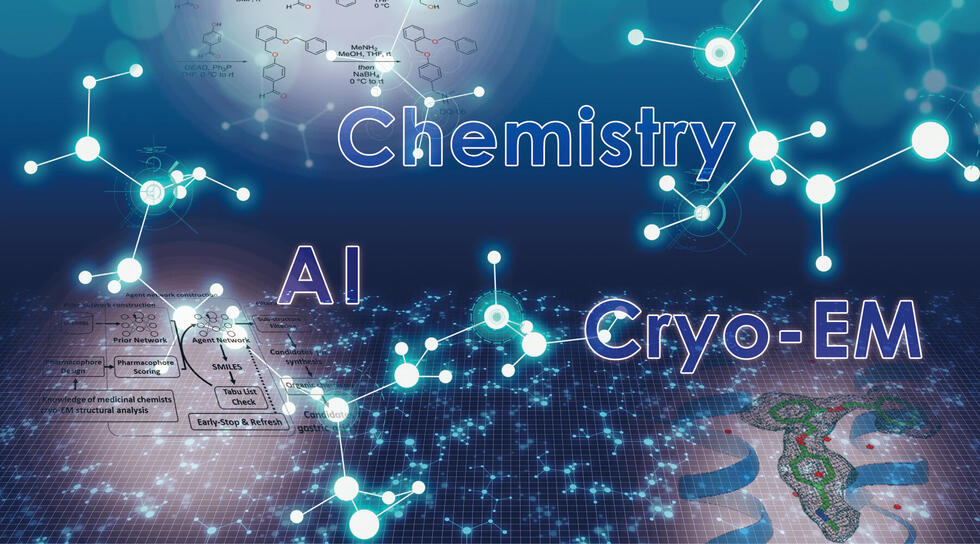
Complex systems
October 27, 2023
Scientists build on artificial intelligence to create next-generation gastric acid treatment
Researchers at Nagoya University in Japan created and improved artificial intelligence (AI) designs to synthesize a candidate compound for a new gastric acid inhibitor with a better binding affinity than existing drugs. Their findings, published in Communications Biology, suggest a new way to work in tandem with AI to develop pharmaceuticals.
Stomach acid is a crucial component of food digestion. However, when the balance of gastric mucosal secretion is disturbed, stomach acid can cause discomfort and, in severe cases, conditions such as gastric ulcers and reflux esophagitis. Therefore, many people turn to gastric acid suppressants, most of which target the gastric proton pump responsible for gastric acid secretion. These drugs help neutralize stomach acid, providing relief for people suffering from heartburn and related conditions.
A collaborative research group led by Associate Professor Kazuhiro Abe and Professor Satoshi Yokoshima of the Graduate School of Pharmaceutical Sciences at Nagoya University, in collaboration with Intage Healthcare Corporation and the SPring-8 radiation facility, took a novel approach to drug development. They focused on the steric structure of the gastric proton pump, a complex protein structure in the stomach lining that transports the H+ protons that make up HCl, the acid that makes up gastric acid. They analyzed it using "Deep Quartet," an artificial intelligence-driven drug discovery platform.
Using the AI, the researchers designed new candidate compounds with unique chemical structures to effectively target the gastric proton pump. The team aimed to identify compounds that could simultaneously bind to multiple sites on the proton pump, enhancing the overall effectiveness of the drug. They chemically synthesized these candidate compounds and analyzed their binding structures to proteins using cryo-electron microscopy. Then, the compounds were further modified to improve their binding ability.
The researchers used AI to generate more than 100 candidate compounds with unique chemical structures. Expert chemists and structural biologists then selected the most promising candidates for synthesis and tested how strongly they bound and inhibited the gastric proton pump, ultimately revealing that the sixth compound synthesized (DQ-06) exhibited stronger binding than existing reference compounds.
Despite initial reservations, the technology won Abe over. “I was skeptical when I saw some of the strange chemical structures, including DQ-02 (the second one they tested) and related ones,” he said. “But we suspected there must be a reason AI suggests such strange chemicals. We noticed that the first had a narrow binding site compared to the second, so we realized that AI was quite ‘honest’ in its approach, designing for the given binding site, which is flexible.”
Furthermore, to gain insights into the binding mechanism, the research group employed cryo-electron microscopy to visualize the molecule's interaction with the gastric proton pump. They discovered that there was room for further improvement in the binding strength. Based on this knowledge, a new compound, DQ-18, was synthesized by introducing a chlorine atom into DQ-06, resulting in even stronger binding.
“While the results confirmed that the compound was bound as expected, we found that there was still some room between the binding pocket of the compound and the protein,” Abe said. "If we fill these gaps, the compound will fit more 'snugly' into the pocket, resulting in stronger bonding".
This innovative approach led to the creation of a compound with a binding affinity nearly 10 times higher than that of SCH28080, a prototype compound for gastric acid inhibitors. Abe believes that this shows the importance of the synergy between humans and AI in drug discovery. “We can see AI being useful for creating treatments, but not completely or automatically”, he said. “We used AI for structure-based drug design, which we humans are not so good at. But we chose real candidates to synthesize, and indeed we improved it with our own hands. We efficiently used AI for what we are not good at. But I believe, at least for the time being, human knowledge is ultimately required to make any final decision.”
Their research represents a significant step forward in the development of pharmaceuticals, promising more efficient and reliable treatments for gastric acid-related conditions and inspiring fresh approaches to drug discovery. The collaboration between researchers and artificial intelligence showcases the potential of AI to revolutionize the world of medicine and improve human health as a collaborative tool alongside scientists.
The study, “Deep learning driven de novo drug design based on gastric proton pump structure,” was published in Communications Biology on September 19, 2023 at DOI: 10.1038/s42003-023-05334-8.
Authors:
Kazuhiro Abe, Mami Ozako, Miki Inukai, Yoe Matsuyuki, Shinnosuke Kitayama, Chisato Kanai, Chiaki Nagai, Chai C. Gopalasingam, Christoph Gerle, Hideki Shigematsu, Nariyoshi Umekubo, Satoshi Yokoshima, and Atsushi Yoshimori
Media Contact:
Matthew Coslett
International Communications Office, Nagoya University
Email: icomm_research@t.mail.nagoya-u.ac.jp
Image credit: (C)INTAGE HOLDINGS Inc.